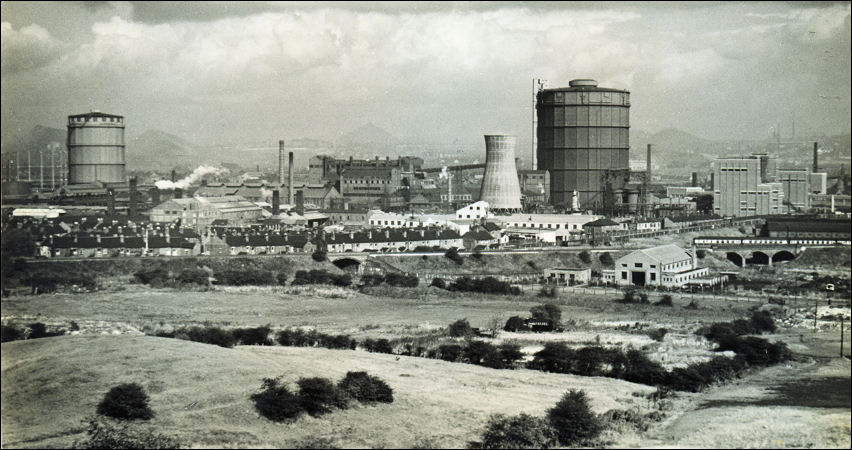![]()
|
|
|
Stoke-on-Trent - Advert of the week |
|
|
Stoke-on-Trent City Gas Department - 1947 advert
City Handbook © ED. J. Burrow & Co
|
from 1947 Stoke-on-Trent Handbook....
The City Gas Department is recognized as one of the most progressive undertakings in the country, with more than 120 years of uninterrupted service to the community. Commencing as independent gasworks, under the control of the various local authorities and a private company, the gas supply throughout the district was brought under the City authorities in 1922, since when the development has received a remarkable impetus. Low charges, uniform quality, and adequate supplies have been the prime motives of those controlling the Department, with the result that both domestic and industrial consumers are provided an unequalled service at prices that compare favourably with any undertaking in the country and are considerably lower than those usually charged. In this connection it is interesting to note that, unlike most undertakings, the City Gas Department does not make any higher charge to consumers taking a supply through a prepayment or slot meter. Furthermore, the scale of charges is not divided into innumerable blocks at varying rates. The whole of the gas consumed in any particular quarter is charged at the rate which applies to that quantity. SCALE OF CHARGES
OUTSIDE AREAS. For gas consumed outside the City area, sixpence (6d.) per thousand cubic feet, or 1.2631d. per therm, is added to the above prices. Gas is manufactured at the Etruria Works, which is acknowledged to be amongst the most modern in the country, and has been largely extended in recent years in order to cope with the phenomenal increase in demand for gas from both domestic and industrial consumers. In addition supplies of gas are taken from the coking plants at Birchenwood Coal and Coke Co. Ltd., near the northern boundary of the city and from the Shelton Iron, Steel and Coal Co. Ltd., at Etruria. Distribution is carried out from the main works at Etruria and from holder stations at Longport, Stoke, Fenton and Longton. The system, which incorporates high-pressure mains and district governors, ensures unrestricted supplies at ample pressure throughout the city and the adjoining areas supplied by the undertaking. For the convenience of consumers the Department has showrooms at Tunstall, Burslem, Hanley, Stoke and Longton where a full range of domestic gas appliances may be inspected under working conditions and arrangements made for installation on rental, hire purchase or cash terms. That consumers appreciate the facilities afforded is shown by the fact that more than 17,000 cookers have been installed on rental terms, and more than 59,000 gas appliances of various types fixed on hire purchase terms in addition to the large number sold for cash. The Department was among the first in the country to form a branch of the Women's Gas Council, which meets regularly, on the third Wednesday in each month, at the Hanley showrooms. Cookery demonstrations are held twice weekly, at the Hanley showrooms, and a competent demonstrator is available to visit consumers' homes or women's associations to advise on all problems relative to cooking and household management. Special attention has been paid to the needs of industry, especially the ceramic industry, which has its centre in the district. Plant has been largely modernised in recent years by the introduction of town gas for firing all classes of ware and for other operations necessitating the application of heat. Gas is in general use for the firing of tiles, earthenware, china and porcelain, for drying clay at all stages of manufacture, for the melting of frits and enamels for colour manufacture, and for general space heating in factories. Equally wide use of gas is made in the many branches of the metallurgical industries, in the preparation of foodstuffs, and in the confectionery and baking trades. The Department is prepared to give competent technical assistance on all problems relative to the use of gas for industrial and commercial purposes; to advise on the selection of the most efficient and economical apparatus; and to carry out tests or arrange for the maintenance of equipment. Complete schemes for the supply and installation of all classes of gas apparatus are gladly submitted, and the work is carried out expeditiously in first quality materials by qualified workmen. Special terms are offered to builders who purchase gas appliances through the Department and concessions are made in the charges for services to new property if carcassed in accordance with the Department's specification, full details of which may be obtained from the Chief Engineer and General Manager, Gas Works, Etruria. |
||||||||||||||||||||||||||||||||||||||||||||||||||||||||||||||||||||||||||||||||||||||||||||||||

The Gas Works in Etruria
Valley - 1955
The gas works became more and more extensive to meet the increasing
demand of the pottery industry following the demise of the coal-fired
bottle kilns and preparation for the introduction of the first Clean Air Act
in 1956